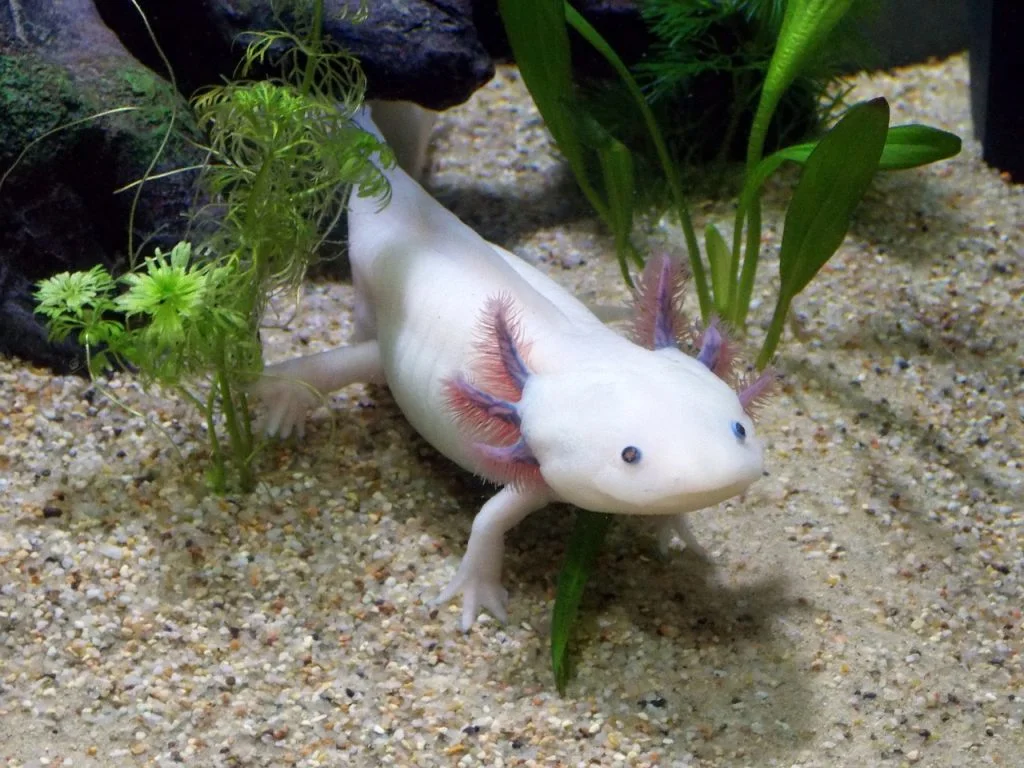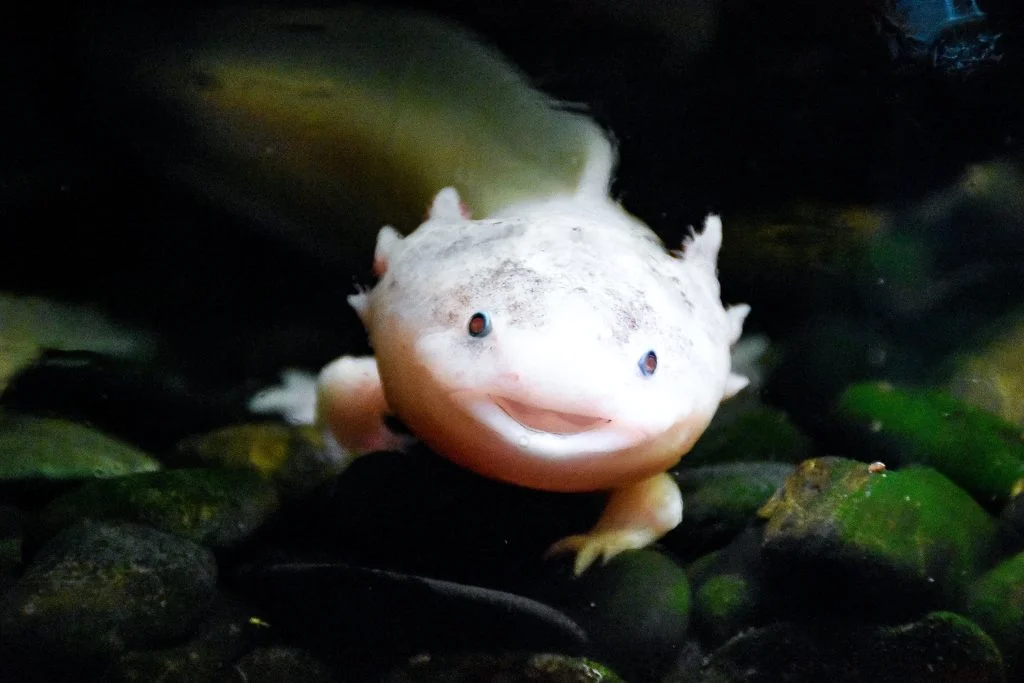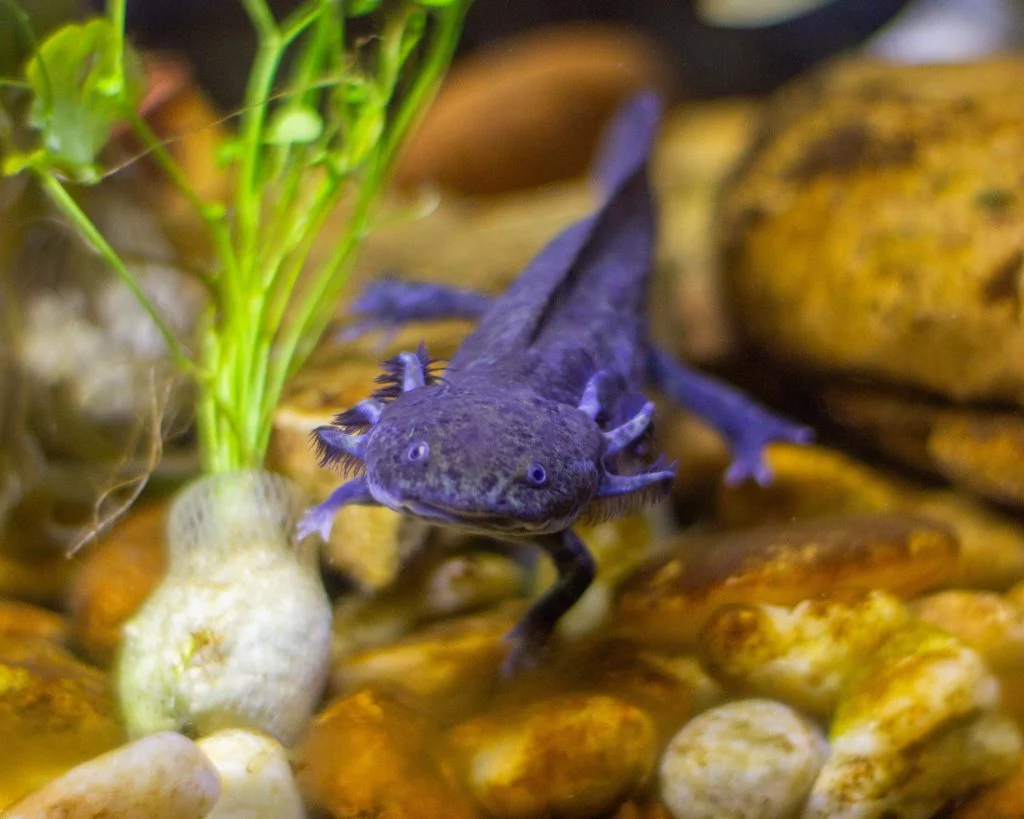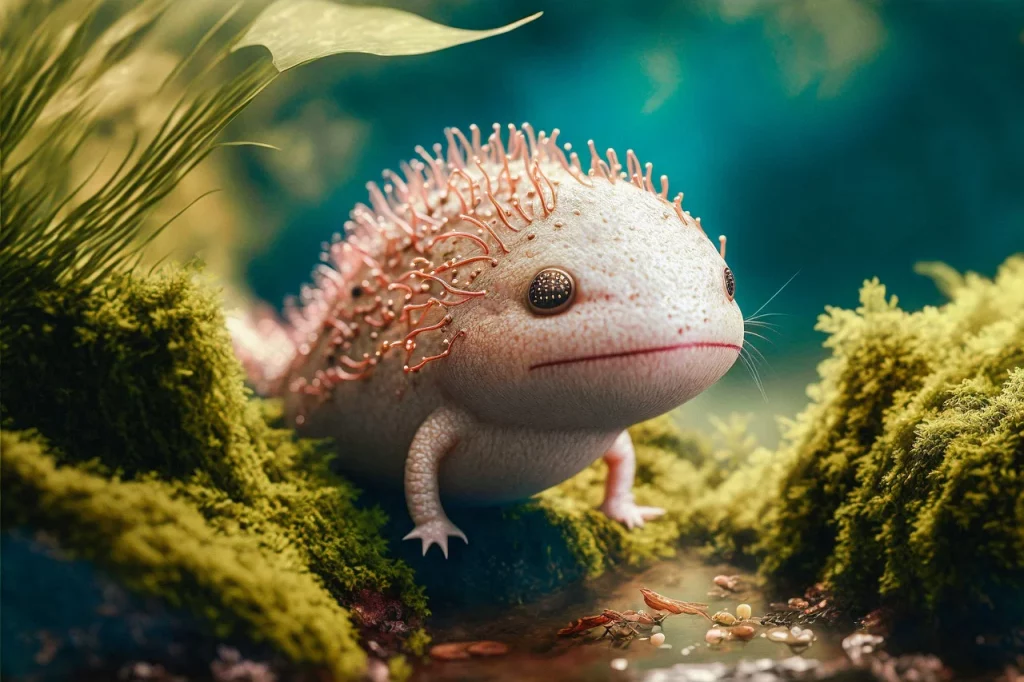The day I first laid eyes on an axolotl, I thought it was the result of a child’s overactive imagination. A creature with gills like feathers, a grin like a Cheshire cat, and a lifestyle that screams ‘forever young‘? My journey into the world of axolotls started with curiosity and ended up as a full-blown obsession.
Moving on, I dove headfirst into learning everything about these aquatic enigmas. Can you believe that they can regenerate almost any part of their body? It’s like they’re the superheroes of the amphibian world. Now, I’m here to share the wisdom of my experiences. Buckle up, because these 50 axolotl facts are going to take you on a wild ride through the wonders of nature’s most charming oddballs.
In the aquatic ballet of life, axolotls pirouette with the grace of forever youth.
Unknown
Axolotl Facts
If you are ready, let’s explore together some axolotl fun facts. As you journey through them, remember that a quiz at the bottom will test your attention to detail, so read thoroughly to succeed.
- Axolotls, a salamander species, are indigenous to Mexico.
- Notable for their impressive regenerative abilities, they can restore lost limbs.
- Beyond limbs, axolotls can also regenerate their spinal cord, heart, and various internal organs.
- Displaying neoteny, they retain youthful characteristics throughout their existence.
- Axolotls seldom experience metamorphosis into terrestrial forms.
- These creatures have a life expectancy of 10 to 15 years under human care.
- The species is on the brink of extinction in its natural environment.
- Xochimilco’s canal network, close to Mexico City, is their predominant habitat.
- Variations in axolotl colors include wild, albino, and leucistic.
- Their nourishment comprises small fishes, worms, and insects.
- Mainly, Axolotls respire using their external, fringed gills.
- They are also equipped with lungs for breathing air when required.
- Genetically, axolotls bear resemblance to other salamanders.

- They are a focus in scientific research for their regenerative talents.
- Characterized by a cartilaginous skeleton, they lack the rigidity of bone structures.
- Important in developmental biology, axolotls are key study subjects.
- Axolotls can reach a size of up to 30 cm (around 12 inches).
- They hunt primarily through chemical signals due to limited vision.
- Nature-wise, axolotls are solitary and guard their territories.
- They are recognizable by their unique smile-like facial structure.
- These creatures are nocturnal, most active during night hours.
- Egg-laying involves singular eggs attaching to aquatic plants or surfaces.
- They have an exceptional resistance to cancer and other ailments.
- Wild axolotls generally exhibit greater size and robustness than those in captivity.
- The name ‘axolotl’ is rooted in Nahuatl, an ancient Aztec tongue.
- They have inspired many mythological tales and artistic works.
- Axolotls can suffer stress under unsuitable environmental conditions.
- For optimal well-being, they require chilled aquatic environments.

- As poikilotherms, their body temperature is influenced by their surroundings.
- There have been instances of axolotls being introduced to non-native waters.
- Captive breeding programs are vital for their continued existence.
- Like other vertebrates, axolotls have a closed circulatory system.
- They rely heavily on their acute olfactory abilities for food and mate detection.
- To maintain hydration and protection, their skin produces mucus.
- Axolotls are egg-laying creatures, opposed to live birth.
- They are capable of producing up to 1,000 eggs per reproductive cycle.
- Environmental contamination poses a major threat to their survival in natural settings.
- Axolotls use their lateral line system to sense water movements.
- They prefer low-light conditions, being light-sensitive.

- Water temperature significantly affects their metabolic activities.
- As opportunistic predators, they consume whatever prey is available.
- Poor water conditions can lead to health issues in axolotls.
- To enhance oxygen intake, axolotls perform gill fluttering.
- Illegal trading of these animals impacts their numbers in the wild.
- Axolotls have the unique ability to regenerate the same limb repeatedly.
- Research on axolotls provides insights into limb regrowth in various species.
- Genetic analysis of axolotls aids in broader genetic research.
- They communicate using a range of sounds for interaction.
- Unique among few species, they can regenerate brain parts.
- A distinct feature of axolotls is paedomorphosis, enabling adulthood without typical metamorphosis.
Axolotl Myths

If you enjoyed these cool facts, now it’s time to debunk some myths about these cute things. If they can regenerate every part of their body, are they immortal? Let’s see what is actually true.
- Axolotls Can Fully Transform into Terrestrial Salamanders
Axolotls remain in their aquatic, gilled form throughout their lives, unlike other amphibians. They don’t naturally metamorphose into terrestrial forms. - Axolotls Can Regenerate Any Body Part Instantly
Axolotls have remarkable regenerative abilities, but regrowing limbs takes weeks or months, not instantly. - Axolotls Are Common Household Pets
Axolotls need specific care, including a cold water aquarium and a specialized diet, making them less common as everyday pets. - Axolotls Can Live Comfortably in Any Water Condition
Axolotls require clean, cool, and well-filtered water. Poor conditions can lead to serious health issues. - Axolotls Are Just Albino Forms of Regular Salamanders
Albino axolotls are one variation; the species has a unique genetic makeup and exhibits various color morphs.
No products found.
Axolotl FAQ

I know you can’t wait to take the quiz in the next section, but first we have to check the answers to some of the most common questions asked online about these creatures. What do axolotls eat? If you don’t know, then read carefully.
- Where do axolotls live?
Axolotls are native to Mexico, specifically the lake complex of Xochimilco near Mexico City. Sadly, due to urbanization and pollution, their natural habitat is severely diminished, making them quite rare in the wild. - How to pronounce axolotl?
It’s quite a tongue-twister! “Axolotl” is pronounced as “ax-uh-lot-ul.” The ‘ax’ sounds like the ‘ax’ in ‘tax,’ the ‘lo’ sounds like ‘lot’ without the ‘t’, and the ‘tl’ is pronounced as a combined ‘tul’ sound. - How long do axolotls live?
In captivity, these unique amphibians can live up to 10-15 years, which is pretty impressive! Their lifespan can vary depending on their environment and the care they receive. - What do axolotls eat?
Axolotls are carnivorous, which means they love a meaty diet. In captivity, they are often fed a variety of foods, including small fish, worms, and specialized amphibian pellets. They have quite the appetite for protein-rich meals! - Are axolotls endangered?
Unfortunately, yes. Axolotls are listed as critically endangered. Their decline is primarily due to habitat loss and pollution in their native waters. Conservation efforts are in place, but there’s a long road ahead to ensure their survival.
Axolotl Trivia

Get ready to test your axolotl knowledge! If you don’t nail a single question, don’t be surprised if you start craving underwater snacks! Don’t tell me I didn’t warn you.
Conclusion
Axolotls might just be nature’s best ‘oops’ moment. Perpetual babies? Check. Healing powers? Double check. A face that screams, ‘I just heard a hilarious joke’? Absolutely. These fascinating creatures remind us that nature has a sense of humor too.
Their existence challenges our understanding of evolution and biology, all while looking ridiculously cute. But here’s some food for thought: if you had the power to regenerate like an axolotl, what’s the first thing you’d regrow? A lost sock, maybe? Let me know in the comments.
2 Sources Used For This Article

